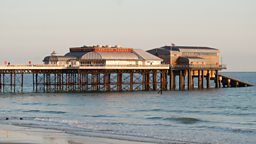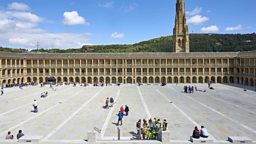Those were exciting times, Britain had
only just joined the economic union and customs were opened up so France was a storeroom full of Art Deco that I could use to generate stock with a more classic line than some of what could be called more average British design.
I was over in France at least once a month.
I was over in France at least once a month.
We had
to eat out all the time and of course you have to have a glass of
wine with your meal while there. Y'know perks of the job. We roughed it a bit but it was enjoyable. there were hardly any tourists then. Before the cheap no frill airlines invaded.
Somehow or other this book has stayed with me
all this time.
I recall the morning I bought it well.
I had slept in the van the night
before, on the front seat, with Colin the window rattler who snored his head off in the back of the van. I woke up more tired than when I went to sleep.
The early bird catches the worm, and
all that.
It was also the day that I found an original Hispana Suiza car mascot in good condition.
That I sold to a local motor museum in Mouldsworth.
It was also the day that I found an original Hispana Suiza car mascot in good condition.
That I sold to a local motor museum in Mouldsworth.
I wish I still had that too, its very rare and the more they
have been reproduced the more valuable the original has become. James
still has it too. When he closed the museum down he showed me it.
He knew he had something rare he kept it for his own collection.
He knew he had something rare he kept it for his own collection.
This colourful printed folio of designs, I was
surprised to find, was by Paul Iribe.
The idea for the publication had been suggested by Maurice
Constantin-Weyer and printed in Paris.
Knowing some of the work of Paul Iribe
who was an all round designer of furniture fashion and art, it went
against the grain of his work. I was confused initially.
Then I thought, well wouldn't you be angry.
It was published in 1934 and the first hundred copies were kept for the artist. Now, I say its called Parlons Francais which is ironic because I did not speak very good French myself and missed the point initially. That it is called Parlon Francais and not Parle Francais.
It was published in 1934 and the first hundred copies were kept for the artist. Now, I say its called Parlons Francais which is ironic because I did not speak very good French myself and missed the point initially. That it is called Parlon Francais and not Parle Francais.
Yes here it seems, Paul Iribe is
speaking for the French in his mind.
1934 was a mere 15 years after the
treaty of Versailles which was signed in 1919 the year after the
cessation of the conflict of the First World War that saw so many of
his compatriots die.
I have not done any research about
whether the artist was there in the trenches, but he was definitely
there in spirit.
The language of the art with its captions is
vitriolic and holds no punches.
It is hard to imagine now today, with
the vile comments on social media becoming commonplace, but here in
1934 this is about as strong as you could get.
And from a man who designed ladies clothes, who was in fact at one time the partner of Coco Chanel.
And from a man who designed ladies clothes, who was in fact at one time the partner of Coco Chanel.
It opens up another side to the man who designed the
famous Nautilus Chair, examples of which are on view at The Waldorf,
New York.
Many other examples of his designs make small fortunes when they appear in the, usually, upper class salerooms.
Many other examples of his designs make small fortunes when they appear in the, usually, upper class salerooms.
That were sponsored by the State, The Republic
of France.
And yet here he was in 1934, counting
the cost of the First World war and it looks to me, projecting the
death that was about to befall his country in 1939, some five years
after its publication when the Nazis invaded.
This is a man who was not scared to
upset the establishment.
I don't understand all the Parle or
recognise a lot of the named and shamed but I know enough to see that
he was fuming with rage.
Rage at the people who were trusting the
Nazi regime when they were about to cross the borders, once again,
and this time make it all the way to Paris.
I am not looking any further into the
history of the war time occupation, of France.
I don't have the time in my head this week as the 100 year anniversary of the end of hostilities comes
about this next week. It is a sad time to reflect.
I will be too busy remembering those fallen and
some of those that fought, I knew.
My Grandfather was there. Last year I remembered Passchendaele and those I did not know.
I have spoken to many
who have now sadly passed. But I will not forget them. Forthey sacrificed themselves so we could be free. And speak freely.
While wars still rage I will take a
short time to think about those who warn of the dangers ahead.
Paul
Iribe was one of those.
I respect the memory of what he did and
sometime I will find my way into looking into the interesting, brave
predictive, strong character that was Paul Iribe.
He unlike so many others these days was
also bold enough to put his name to his words and sign this copy
right above the French tricolour on the frontispiece.
I feel proud to have a link back to
this man who told the truth and was not afraid. Parlon Francais.
It appears to me
to be a historical document. Lest we forget. At our peril.






























